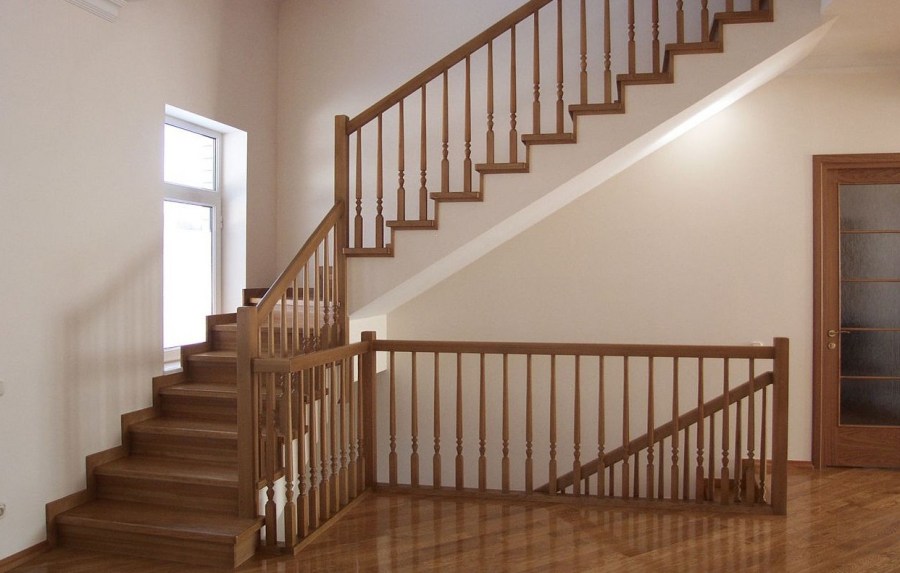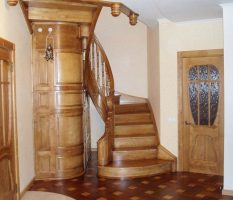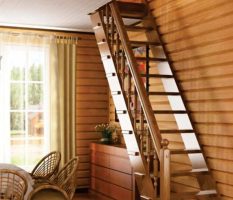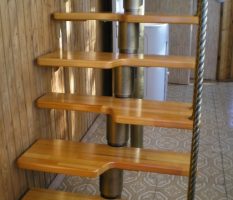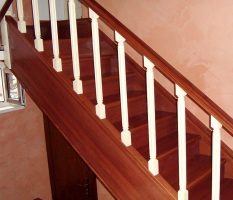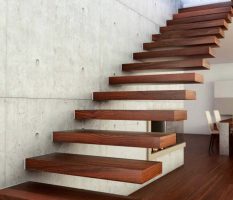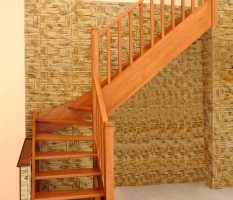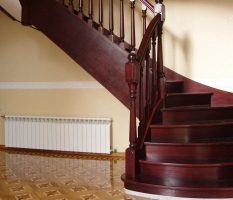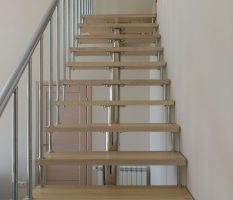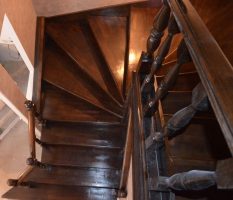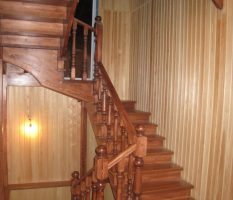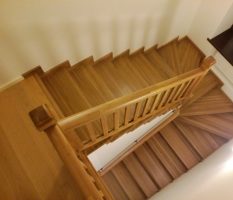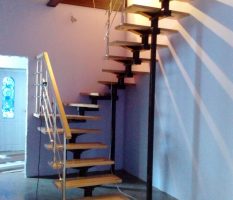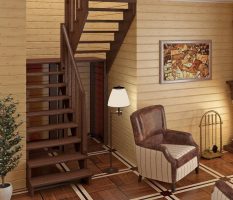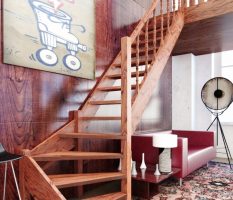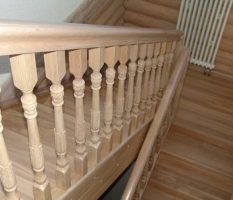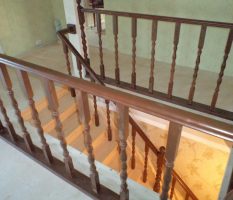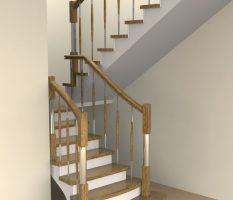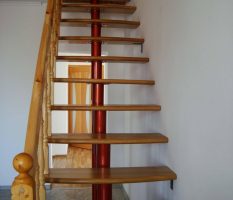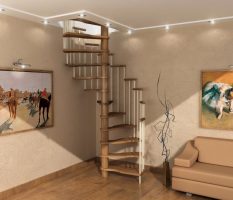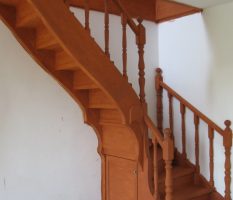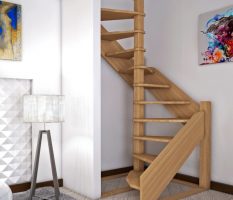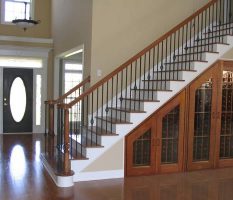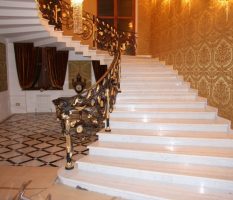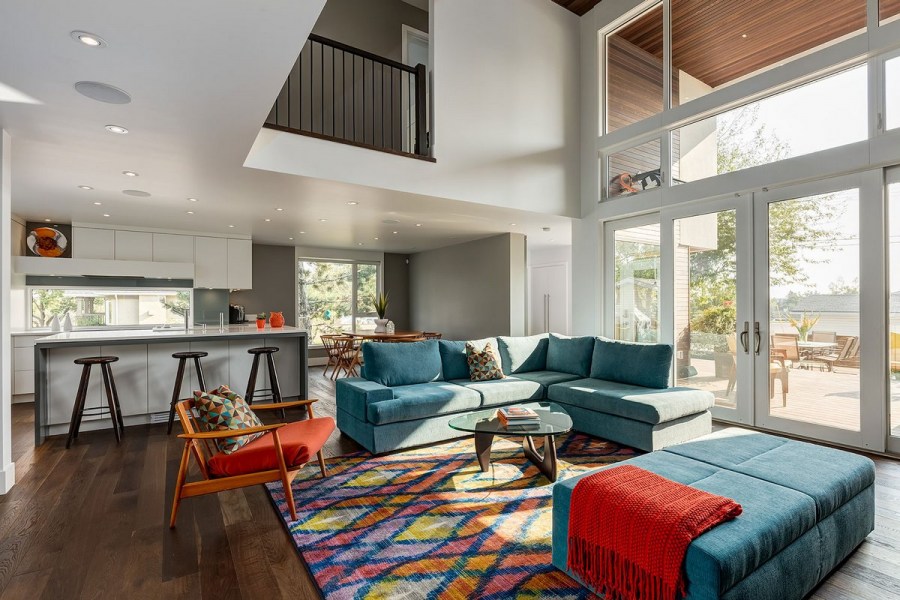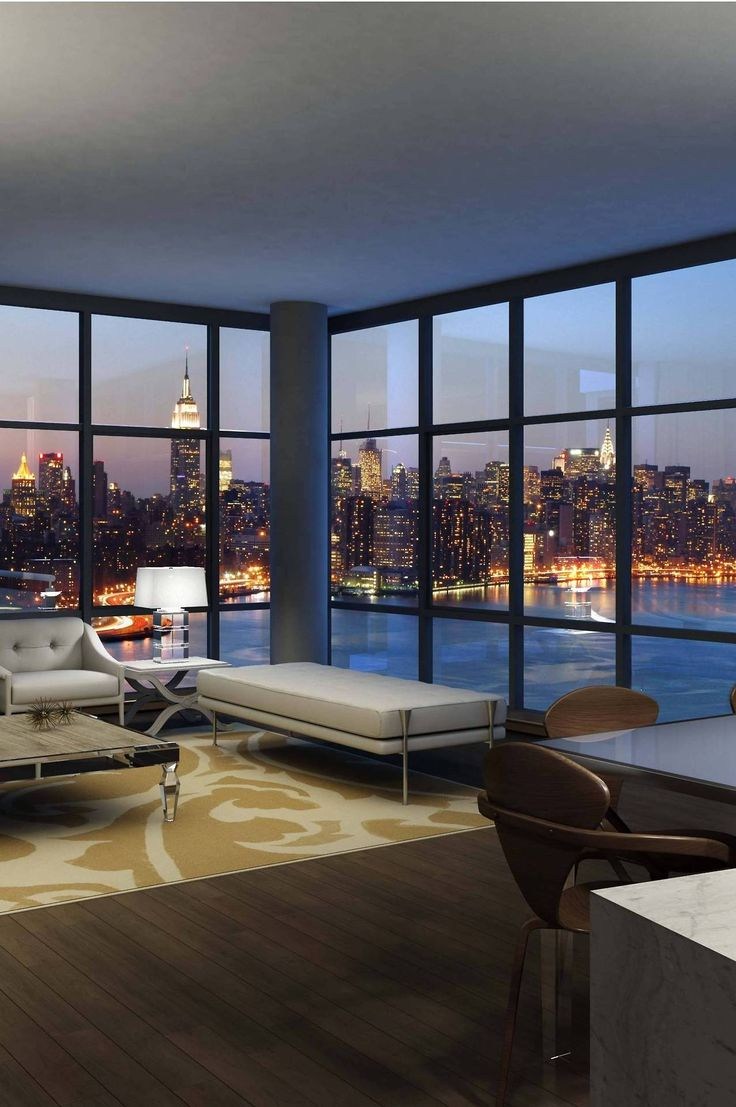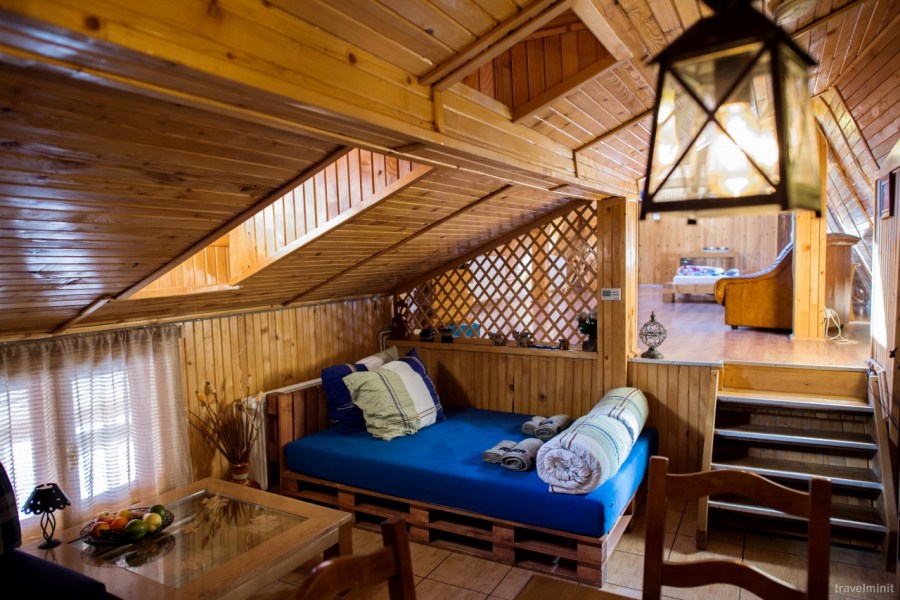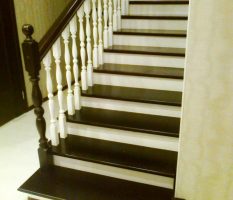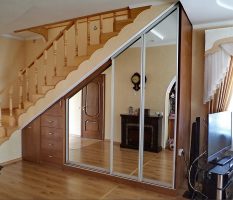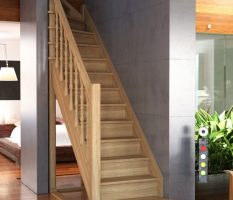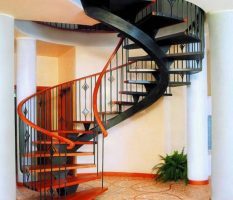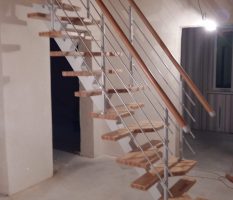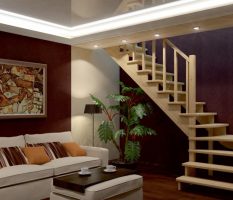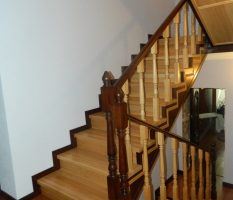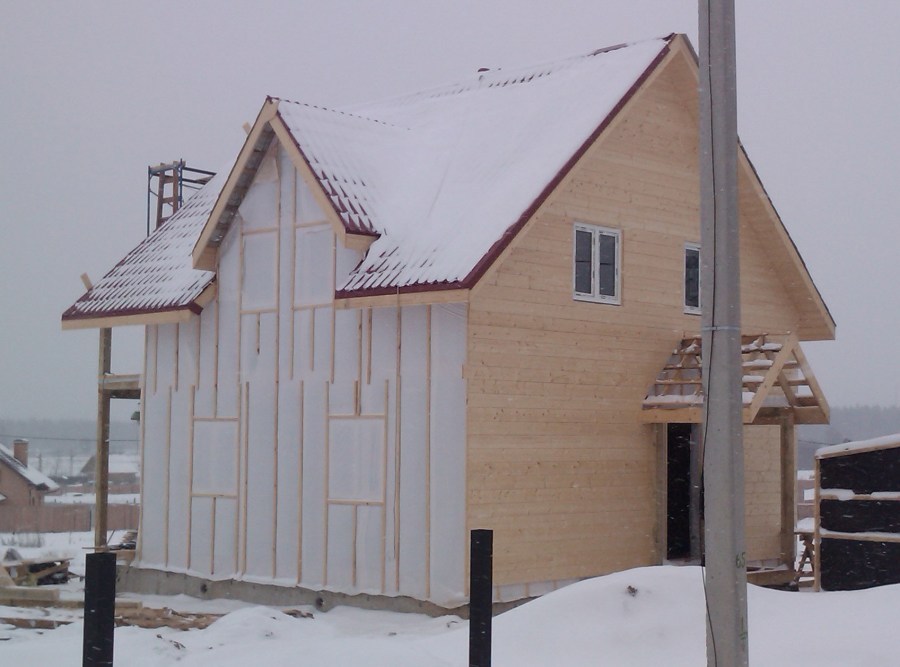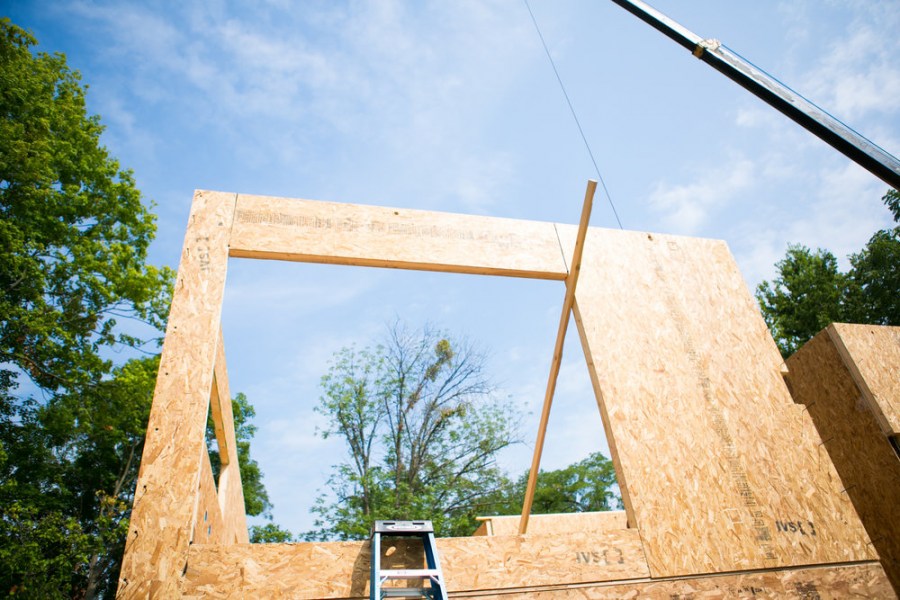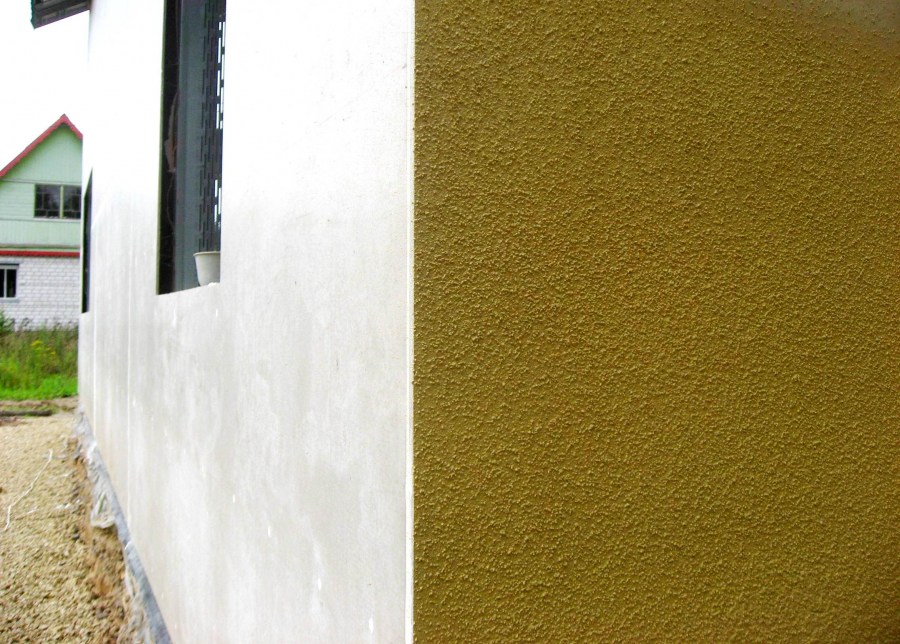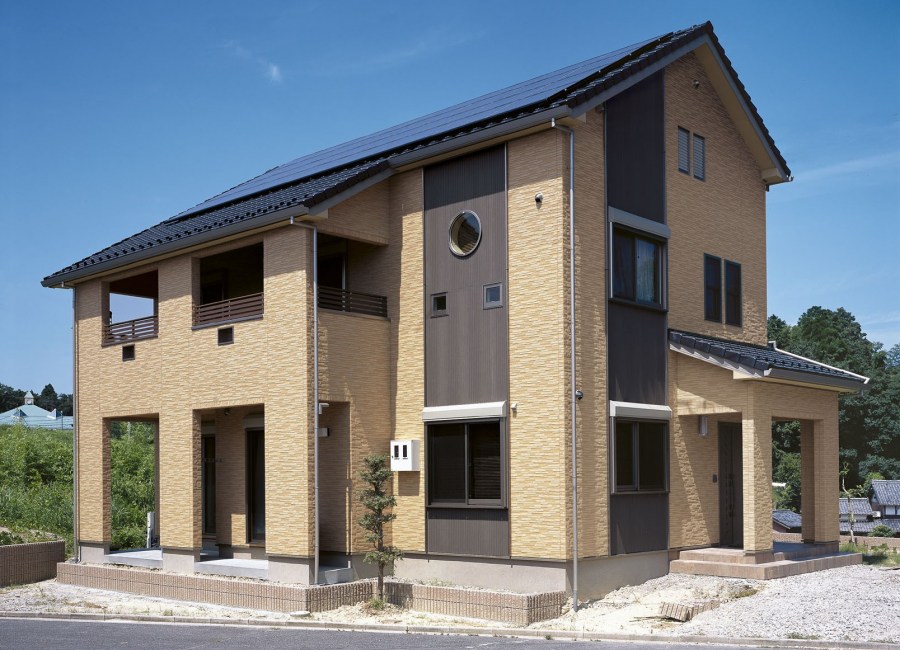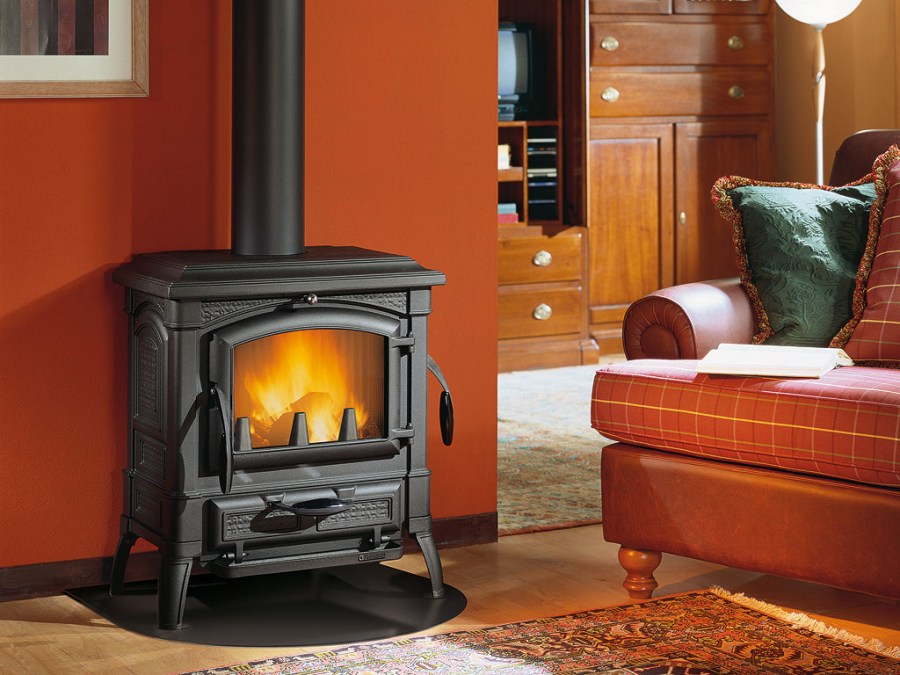An interfloor staircase for a private house - an instruction on how to do it yourself (105 photos of design novelties)
In the construction of a country house, an interfloor staircase has become a necessary element and part of the interior. It can be both inconspicuous and perform decorative functions, be the center of a design composition that affects the design of the premises of the whole house.
When it is made, assembled with your own hands, an accurate calculation of all its parameters is necessary so that it does not become traumatic. Many companies are engaged in the supply of components, from which, according to the instructions, you can assemble the finished structure, do not make its elements yourself.
Its parameters, device features must be known in order to choose the right staircase that will fit perfectly into the interior of the house.
You can independently design the structure, make a sketch of it, or choose an existing option in the photo catalog.
Design Features
Component stairs can be important, used without fail, and additional, included in the device of certain models. Steps (vertical, horizontal part), supports for their support are the main structural elements.
Support beams are of the following types:
- To support the steps from their end part (called a bowstring);
- With emphasis from below (kosoura).
In some types of stairs you can find the absence of railings and balusters - important elements in some designs that enclose the space, protect from falling. Other models have racks and mounts on special bolts.
Classification
The interfloor stairs used in private houses can be divided into the following types:
- Marching;
- Stairs with special bolts in the construction as an attachment element - bolts;
- Screw.
A private house of any type is most often equipped with a marching type staircase. In design, it has marches consisting of several steps separated by platforms. It is convenient to climb up and down, but it usually takes up a lot of space. As fastening steps, kosoures or a bowstring are used.
Marching stairs, in turn, are divided into:
- Closed and open type (the presence or absence in the design of the risers - their difference);
- Swivel (instead of platforms, overhead steps are used);
- Quarter turn configuration;
- Reverse type;
- Circular shape.
The staircase on the bolts has in its design special fasteners - pins with threaded threads, with which structural elements are connected to each other, attached to the wall. The risers are absent, so the staircase takes on an unusual airy look. It can be either compact or stretched. Differs in reliability, durability.
The calculation of its technical parameters is quite complicated for self-manufacturing. But - it can be made to order, or purchased disassembled, taking into account the necessary dimensions.
Installation will also cause certain difficulties, it is better to entrust it to professionals. Preliminary consultation before purchasing components for this type of staircase will not hurt.
When the room has a small area, an interfloor spiral staircase fits perfectly into the interior. Oversized items, furniture will not be convenient to carry, but a huge plus - saving space, crosses out this drawback. It is quite accessible for assembly independently with the ability to work with wood, metal structures.
For a private house, a model that has wedge-shaped steps and a rack mounted on one side on the floor and the other on the inter-floor ceiling is suitable.
On a rack in a circle steps in the form of a spiral are fixed. And the narrower the opening, the design will be steeper, less comfortable. Incorrect assembly can be very traumatic.
Security requirements
Getting to the assembly of the stairs, you need to pay attention to the following points:
- Calculation of the angle of inclination of the structure, what width, height the steps will be, how the first and last will be attached;
- The need to install a protective fence when the staircase is in the center of the room does not fit into the walls;
- The width of the steps should be at least 200 mm, their outer coating should not be slippery;
- The entire structure withstands, according to the requirements for residential buildings, at least 300 kg / m2;
- Reliability, rigidity of interfloor fastening;
- A ladder is not installed with an elevation angle exceeding 45 degrees;
- The optimal span width is up to one and a half meters;
- When dividing the structure with platforms, it becomes not so traumatic;
- Do not save on fastening material, it must be of high quality;
- All elements of the stairs, made independently, must correspond to the dimensions according to the drawing.
Design
In the process of manufacturing the stairs, metal, wood, concrete are used. It all depends on the type, design, personal preferences.
But - first, a drawing of the future project is made, they are determined with the location of the interfloor stairs, they solve a number of issues:
- Will it be at the junction of the walls or in the center of the room?
- Is flooring suitable for this purpose?
- Will it withstand the load of the entire structure during use?
- What size, type of future staircase?
- What material (wood, metal, their combination) will the structure be assembled?
- Are you planning to purchase a complete set of parts for assembly (finished project) or can they be manufactured independently?
In the design process, you will have to consider many options, choose the most optimal of them. If you have experience, you can draw up diagrams, drawings yourself.
Optimal - contact professional architects, designers and the photo catalog, or in the process of working together to determine the final form of the interfloor staircase.
This is best done at the stage of building a house, and not when it is already rebuilt in order to take into account all the nuances in the process of installing an interfloor staircase.
Manufacturing process
Most often, to ensure the best rigidity of the structure, a metal frame is used, which is subsequently lined with wood, sheet steel, marble slabs, and other materials to give an aesthetic appearance.
Actively use fittings, corners, channels for the manufacture of the main elements of the stairs. All parts are interconnected during the welding process. The resulting structure is primed, varnished to protect against corrosion.
The site with all the ceilings, on which the flight of stairs will be placed, is previously strengthened, the optimal support points are selected. Also, designs with optimal weight (wooden or metal) are selected.
Detailed instructions for the manufacture of interfloor stairs may look like this:
The site is selected, the type of future design is determined.All technical parameters are calculated, the amount of material (in other words, an estimate is made). Everything is bought, the parts are adjusted to the required sizes independently or with the help of professionals.
Beams, bowstrings, kosour are prepared, marking of steps, risers is done. They begin to mount the marches, attaching the risers to them, the steps themselves, trying to perfectly combine the parts without gaps. The intermediate platform dividing marches is made.
To fix the march from below, at the base, a supporting transverse beam is used, from above, to the interfloor overlap - anchors and bolts. Fences are mounted with reinforcement of balusters and intermediate racks using metal studs.
With the help of anchors, the installation of extreme poles (rigidly attached to the wall) is carried out. Railings are mounted. Decorative works are carried out (varnishing, the use of wooden carvings, various linings).
Of course, the manufacturing instructions are far from exhaustive. But she answers the main questions - “How to start manufacturing the interfloor stairs. In what order, what to do? ”The remaining nuances are clarified in the process.
In the end, to make an interfloor staircase in a private house with your own hands if you have experience, appropriate material, equipment is not so difficult. You can, of course, buy a finished project. But home masters are not looking for simple solutions and can easily cope with the tasks.
Photo of interfloor stairs
Shovel - 60 photos of the main types, their features and characteristics
Garden fountains - 90 photos of decorative projects with their own hands
Garden furniture: an overview of the best sets of different materials (115 photos)
Which screwdriver is better - 70 photos of the highest quality models
Join the discussion:


